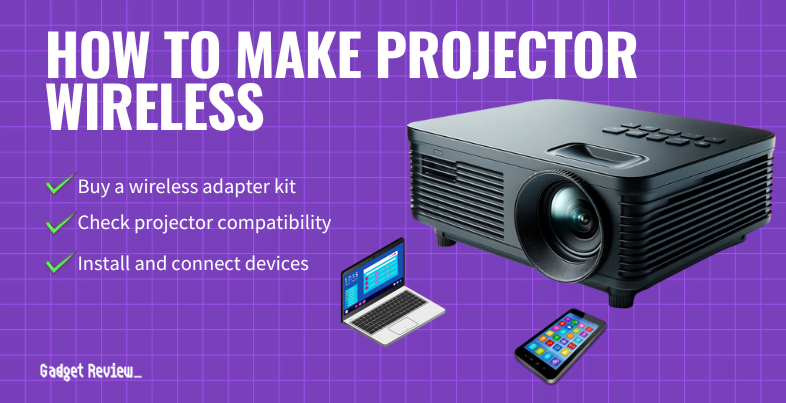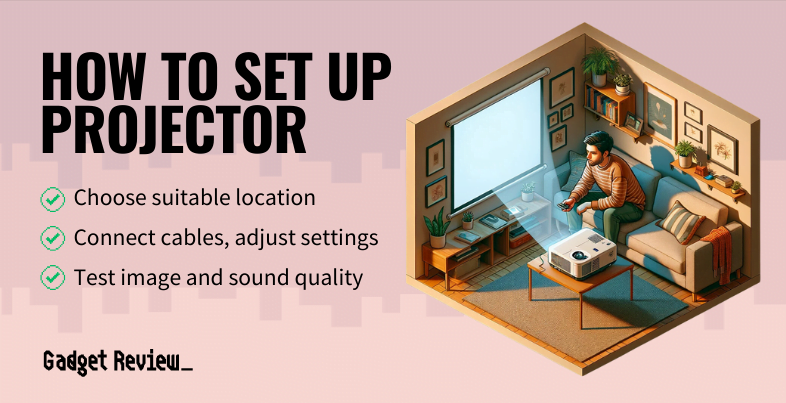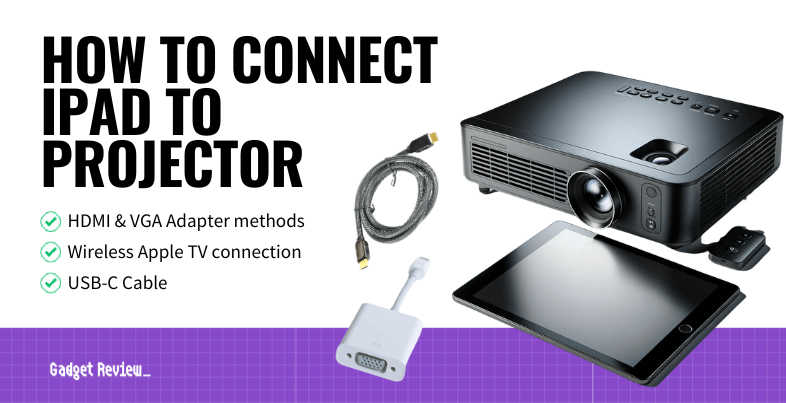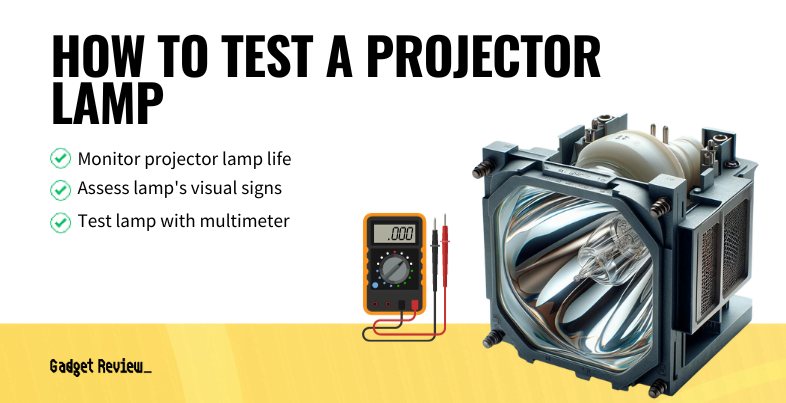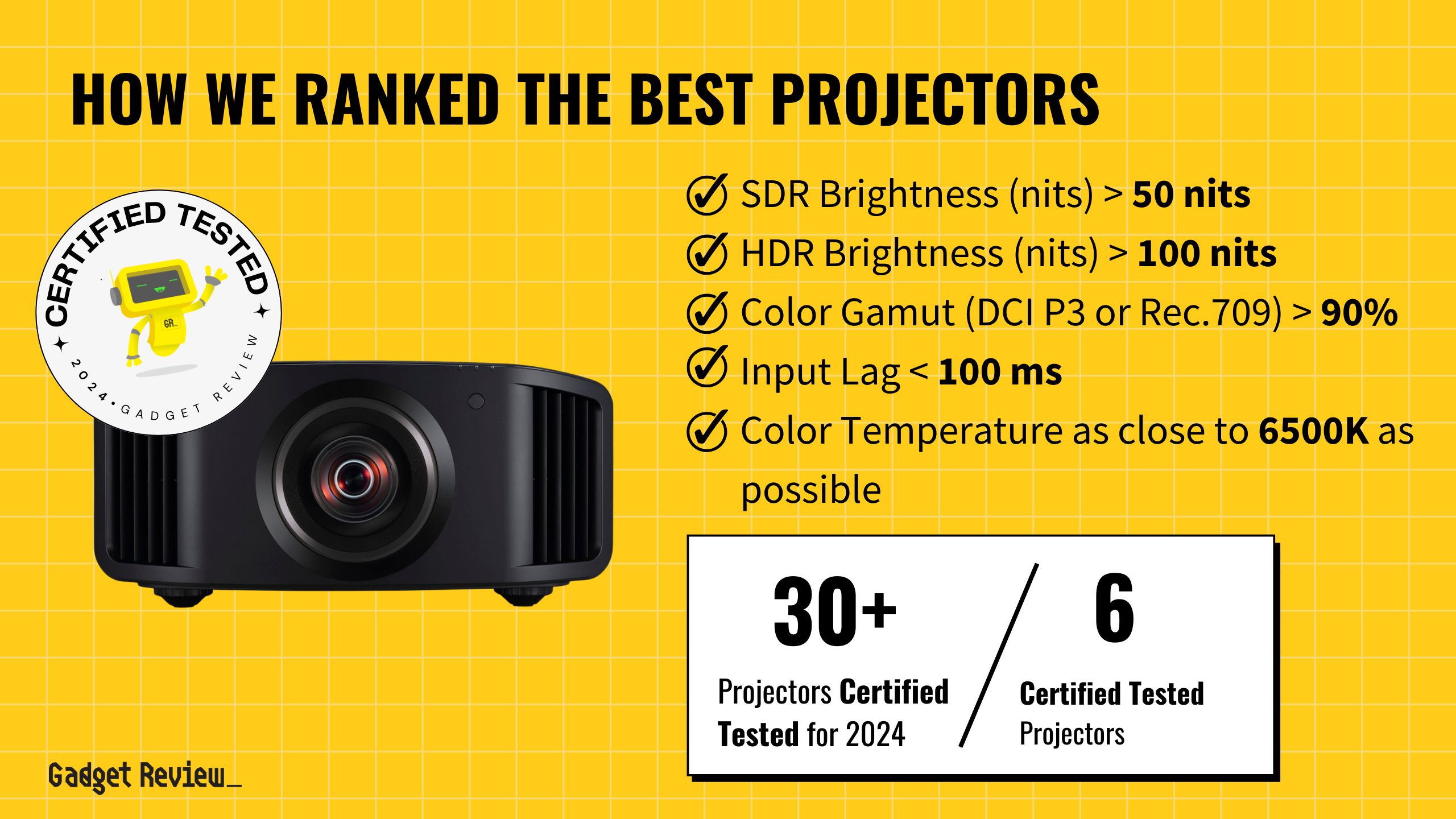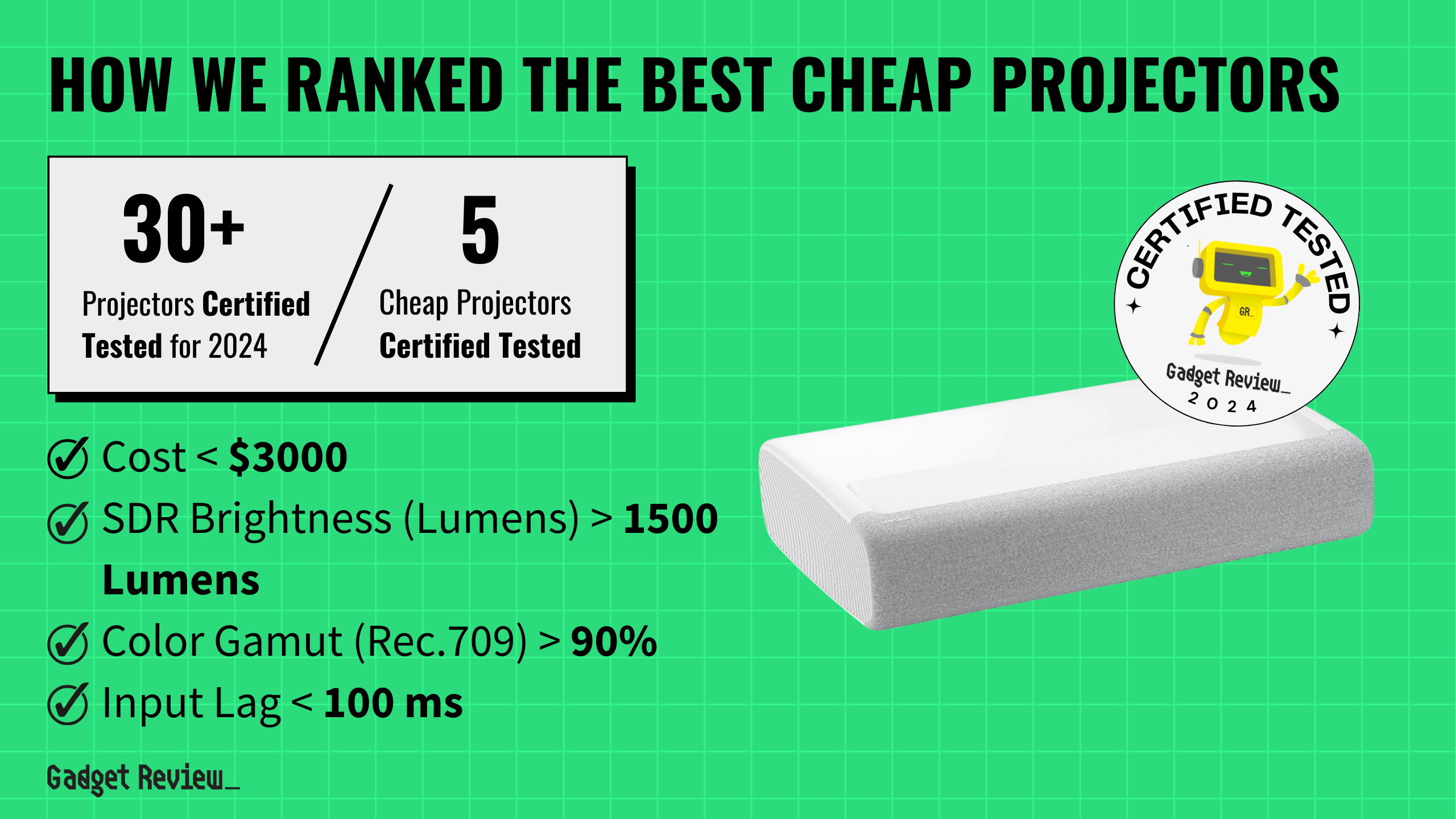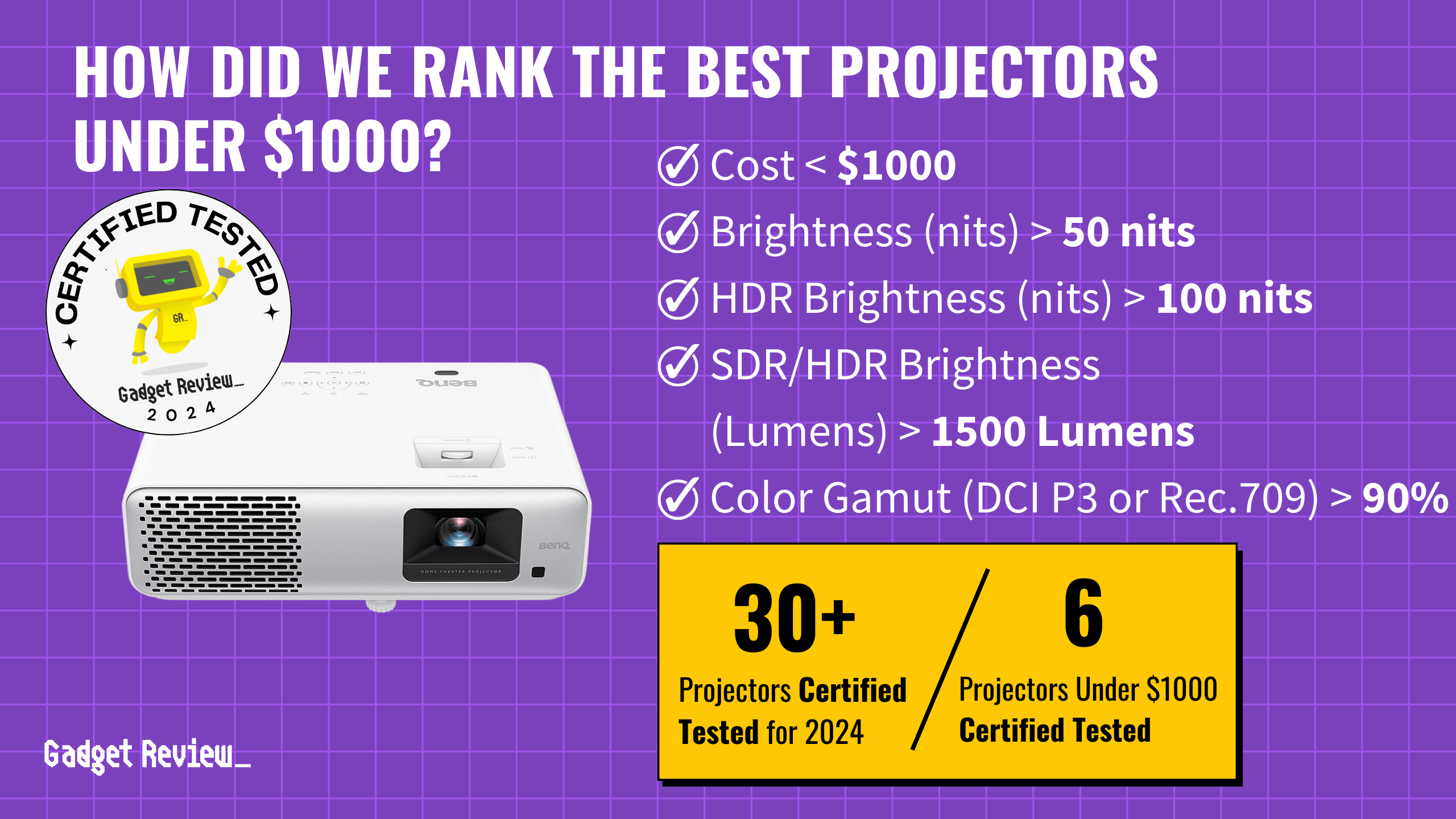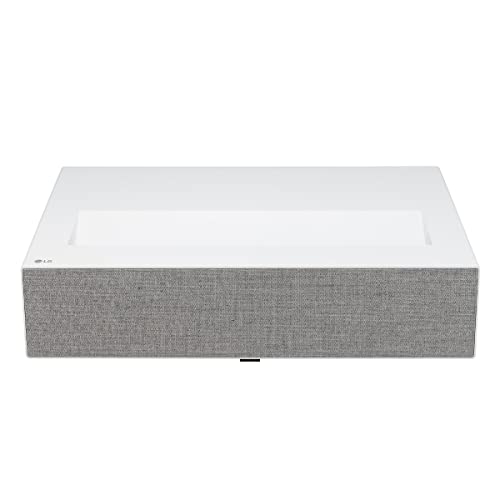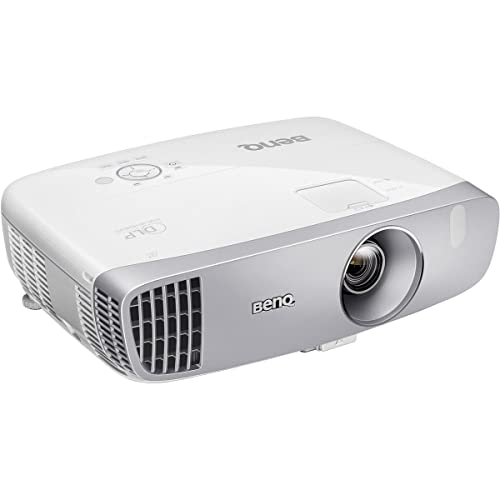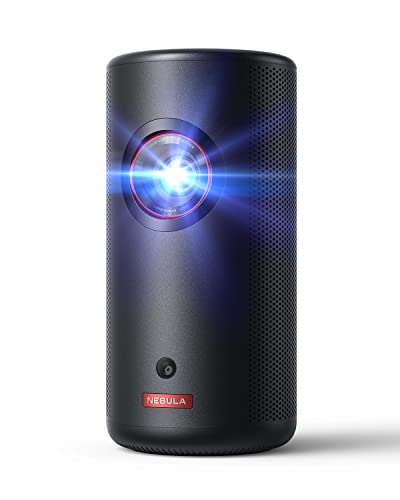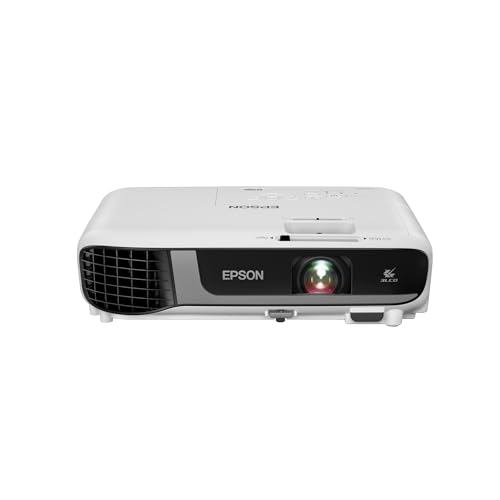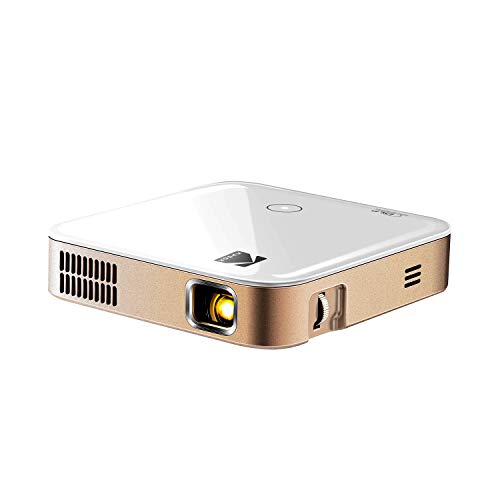If you’re on the hunt for the best 4K-capable projector, focus on brightness, resolution, and connectivity. These features guarantee sharp images and smooth streaming, whether it’s for home theaters or presentations. With a 4K projector, you’ll enjoy detailed visuals and vibrant colors that transform any setup. We evaluated over 30 projectors and analyzed 146,886 reviews.
Only two high-quality projectors earned a spot on our buying guide. We verified each model’s performance and filtered out unreliable and low-quality reviews using our proprietary and scientific True Score. These top performers excelled in image quality, ease of use, and reliability during testing.
How Did We Rank the Best 4K Projectors?
To determine the best 4K projectors on the market, we delved into an extensive review of more than 200 sources. Our approach integrates expert insights, detailed testing procedures, and genuine customer reviews. This in-depth analysis allowed us to identify 1 essential test result, 1 beneficial feature, and 1 crucial specification that matters most for top-performing 4K projectors. Our buying guide reflects a precise synthesis of this data, presenting you with the most reliable recommendations.
Our commitment to unbiased reviews is powered by our ‘True Score’ system, targeting low-quality and fake reviews. When you shop through our links, you’re backing our mission. Dive deeper to see how.
?️ Minimum Specifications
- Must have a resolution of more than 4096×2160.
? Test Criteria
- Color gamut: At least 90% of the DCI P3 or Rec. 709 color gamut, providing rich and vibrant colors.
? “Nice To Haves”
- Input Lag: An input lag of less than 100 milliseconds, to prevent delays between what’s on screen and your reaction to them in games.
Latest Updates
- 05/07/2024: Published the list of best 4K projectors based on our True Score system.
Top Best 4K Projectors For 2025
Prices accurate at the time of publishing

Best Overall

Runner Up

Best Value

Best Budget

Best Mid-Range

Premium Pick
JVC DLA-NP5
Best For Gaming
For gaming enthusiasts prioritizing quick response times, the JVC DLA-NP5’s 19.5 ms input lag delivers an immersive, lag-free experience.
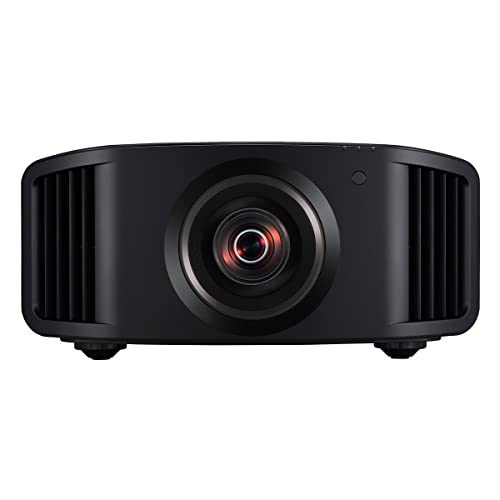
True Score
94942Experts
9716Customers
Cosmic Wonder
 SAVE $2$5,999.95$2,999.99
SAVE $2$5,999.95$2,999.99Read More
Snapshot
Reasons to Buy
- Good brightness rating
- High image quality
- Low input lag
Reasons to Avoid
- Large in size
Specifications

Resolution 4096 x 2160 Refresh Rate 240 Hz 
Display Technology D-ILA 
Contrast Ratio 400,000:1 
Digital Keystone Yes 
HDR HDR10, HDR10+, Hybrid Log-Gamma (HLG) 
Max Distance 510″ 
Max Screen Size 200″ 
3D Ready Yes 
Aspect Ratio 17:9 
Brightness 1900 Lumens 
Depth 19.5″ 
Height 9.2″ 
Integrated Speakers No 
Light Source Lamp 
Light Source Life 3,500 hrs 
Min Distance 74.4″ 
Min Screen Size 60″ 
Noise Level 24 dB 
Portable No 
Smart Functionality No 
Sync Technology n/a 
TV Tuner No 
ThrowType 1.40:1 – 2.80:1 
Weight 42.3 lbs 
Width 19.6″ Yes – All Specs
Test Results
SDR Brightness (Lumens) 1,465 HDR Brightness (Lumens) 1,460 Contrast Ratio (x:y) 0 Input Lag (ms) 20 Color Gamut % (Rec. 709) 132 Color Gamut % (DCI P3 uv) 89 All Retailers
- $2,999.99$6,000Save $2
- $4,399.99
Our Verdict
If responsiveness is a priority, particularly for gaming enthusiasts seeking a 4K projector, the JVC DLA-NP5 is an exceptional choice with its input lag of 19.5 ms. A testament to the projector’s ability to deliver an immersive, lag-free gaming experience where every frame counts and every millisecond makes a difference in competitive gameplay. The DLA-NP5’s adeptness at keeping input lag low without sacrificing image quality makes it a standout choice for gamers who refuse to compromise.
While the JVC DLA-NP5 excels in gaming, it also proves its versatility with its impressive brightness and color accuracy, catering to a wide range of users. With SDR and HDR brightness at 1465 and 1460 Lumens, respectively, this projector ensures vibrant and clear images, even in well-lit environments like office buildings or classrooms where ambient light can be challenging. Moreover, its exceptional color gamut coverage of 131.8% Rec. 709 means it can produce a wide range of colors with precision, making it perfect for viewing content that requires high color fidelity. However, if you are doing color-critical work, the JVC DLA-NZ8 offers an even higher Rec. 709 coverage at 137.6%, although it costs significantly more.
The JVC DLA-NP5 is not just excellent for gaming due to its minimal input lag; its performance makes it a versatile projector suitable for multiple use cases. Whether for immersive gaming, movie watching, or clear and colorful presentations, the DLA-NP5 holds its ground. Its capability to deliver high-quality visuals across different environments and content types makes it a valuable addition to any setup for entertainment, professional, or educational purposes.
Read Less
Did you know 82% of projector reviewers are untrustworthy?
Our research found only 16 of 86 projector reviewers as of April 2025 can be trusted. This is why Gadget Review is committed calculating the most accurate product scores on the web.
To do this, we give every projector review site a Trust Rating, which measures how trustworthy the site and their testing claims are. We then leverage AI & a machine learning model to combine and calculate the Trust Rating with data from experts and consumers to deliver the True Score, the web’s most accurate product quality rating.
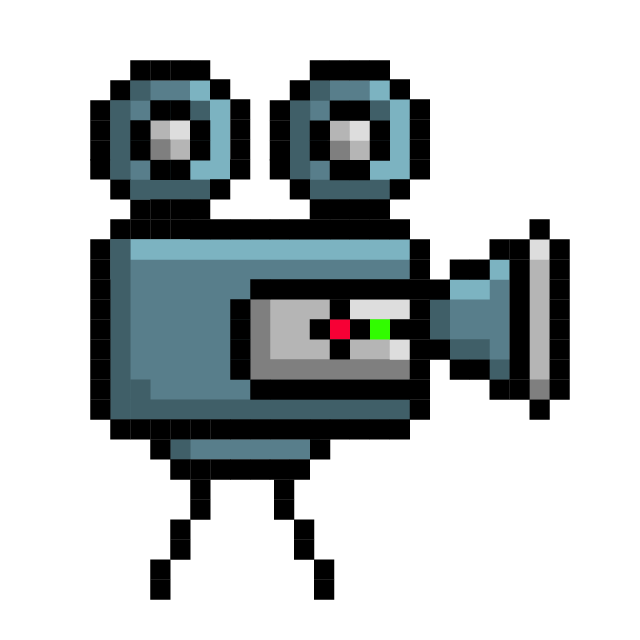 10,297
10,297Projector Reviews Analyzed

30
Total Products Analyzed

Best Overall

Runner Up

Best Value

Best Budget

Best Mid-Range

Premium Pick
JVC DLA-NZ7
For vibrant 4K projection, the JVC DLA-NZ7 excels with impressive brightness and color accuracy, catering to diverse entertainment and professional needs.
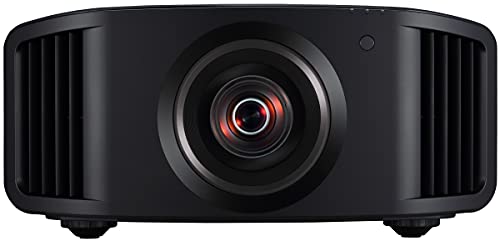
True Score
87914Experts
887Customers
Absolutely Fresh
 $7,499.99
$7,499.99Read More
Snapshot
Reasons to Buy
- Good brightness rating
- High image quality
- Average input lag
Reasons to Avoid
- Remote is not ideal for making adjustments
Specifications

Resolution 4096 x 2160 Refresh Rate n/a 
Display Technology D-ILA 
Contrast Ratio 400,000:1 
Digital Keystone Yes 
HDR HDR10, HDR10+, Hybrid Log-Gamma (HLG) 
Max Distance 510″ 
Max Screen Size 200″ 
3D Ready Yes 
Aspect Ratio 17:9 
Brightness 2200 Lumens 
Depth 20″ 
Height 9.2″ 
Integrated Speakers No 
Light Source Laser 
Light Source Life 20000 hrs 
Min Distance 74.4″ 
Min Screen Size 60″ 
Noise Level 24 dB 
Portable No 
Smart Functionality No 
Sync Technology No 
TV Tuner No 
ThrowType 1.40:1 – 2.80:1 
Video Inputs HDMI 2.0 
Weight 49.5″ 
Width 19.69″ Yes – All Specs
Test Results
SDR Brightness (Lumens) 1,634 HDR Brightness (Lumens) 1,636 Contrast Ratio (x:y) 0 Input Lag (ms) 37 Color Gamut % (Rec. 709) 123 Color Gamut % (DCI P3 uv) 85 All Retailers
- $7,499.99
- $8,999.95
Our Verdict
If you’re seeking a 4K projector that delivers bright and vivid images, the JVC DLA-NZ7 stands out with its impressive SDR and HDR brightness levels. With 1633.5 Lumens for SDR and 1636 Lumens for HDR, this projector ensures your content is bright, even in environments with ambient light. This high brightness level is particularly beneficial for 4K projectors, as it enhances the clarity and detail of high-resolution content, making this an ideal choice for home cinema enthusiasts looking to replicate a theater-like experience in their own space.
The JVC DLA-NZ7 also boasts excellent color accuracy, with Rec. 709 color gamut coverage at 123.4%. This is crucial for those who value true-to-life colors in their viewing experience, as it guarantees that the projector can accurately reproduce the wide color spectrum required for high-definition content. Additionally, with an input lag of 37.2 ms—slightly lower than the 38.5 ms of the significantly higher-priced JVC DLA-NZ8—the NZ7 is suitable for casual gaming, making it a versatile option for game nights and movie marathons.
This projector’s adaptability extends beyond home entertainment. With its high lumens output, accurate color reproduction, and decent input lag, the JVC DLA-NZ7 is suitable for various applications, making it a well-rounded choice. Whether you’re streaming, gaming, or need a reliable option for professional settings like offices and schools, this projector can handle many use cases. This makes it an excellent pick if you’re seeking a device capable of delivering immersive cinematic experiences, engaging gaming sessions, and much more.
Read Less

DON’T SEE WHAT YOU’RE LOOKING FOR?
Check out our guide on the top NEC projectors for reliable performance. For high-quality visuals, explore our selection of the best Sony projectors. If you prefer LG, discover our recommendations for the best LG projectors.
For creative use, see our picks for the best projectors for artists. If you’re on a budget, don’t miss our guide on the top projectors under $1000.
Which Criteria Matters for Testing Best 4K Projectors?
By emphasizing these criteria (1 essential, 1 desirable), individuals can efficiently compare these projectors and their performance. This aids in making informed decisions and selecting a projector that fully meets their needs.
| CRITERIA | RANGE | REQUIRED | DEFINITION |
|---|---|---|---|
| Color Gamut % (DCI P3) | > 90% | Yes | The % of colors a projector can produce defined by the gamut. DCI-P3 is commonly used in film. |
| Color Gamut % (Rec. 709) | > 90% | Yes | The % of colors a projector can produce defined by the gamut. Rec. 709 is commonly used by HD TV, and is also known as BT.709. |
| Input Lag | < 40 ms | No (Nice to have) | The amount of time it takes for inputs to be registered and processed by the projector and shown on screen. |
Our Trusted Data Sources
We looked at 86+ projector reviewers and found that 16 are trustworthy (60%+ Trust Rating). The three we have listed below are our most trusted for projector.
- Pierre-Olivier Jourdenais – Rtings, LinkedIn
- Geoffrey Morrison – CNET, MuckRack
- Kam Valentine – Projector Reviews, MuckRack
Interested in a comprehensive analysis of our data sources? We’ve got you covered. Below, you’ll find a detailed list of every projector review website we’ve identified, organized by their respective Trust Ratings from highest to lowest. But we didn’t stop there. We’ve meticulously reviewed each publication and verified the data by checking whether the authors have bio links to MuckRack or LinkedIn. We’re committed to not only checking the facts but ensuring their veracity.
Projector Test Data & Results
Disclaimer:
Projectors are complex and difficult to test and evaluate, requiring extensive testing on the same level as televisions to paint a complete picture of how any given unit performs. Unfortunately, the testing behind projectors isn’t as rigorous, and a lot of the data we’ve compiled from expert reviewers has been incomplete at times. With different brightnesses measured from different sources, different color gamut tested and spotty contrast ratio measurements, we’ve done the best we can to leverage the available data when putting together these lists but have also trusted our True Score to help us make decisions when the data isn’t available.
1. Color Gamut % (DCI-P3) Test Results
Color Gamut % (DCI P3 uv)
> 90%
Acceptable range of performance
Definition: The % of colors a projector can produce defined by the gamut.
Units of Measurement: % (percentage of gamut covered)
Tools to Measure: Software
Why It’s Important:
DCI-P3 is commonly used in film. By having enough gamut coverage in this particular color space, movies will look accurate to how the creators intended.
Different color gamut are used for different types of media and represent the colors used by that form of media when creating the content. In the case of DCI-P3, this gamut is favored by film creators for making movies, so being able to cover large parts of it with a projector means the projector is better at showing movies.
We recommend a coverage of at least 90% to ensure you can reproduce accurate colors when watching movies and enjoy the films the way they were intended to be seen. Any lower and you begin to lose accuracy, which impacts how the movie looks by distorting the director’s creative vision.
Color Gamut DCI-P3 (%; higher is better; 0 = No Data)
2. Color Gamut % (Rec. 709) Test Results
If you watch a lot of high-definition TV such as HD sports, you’ve experienced the Rec.709 gamut. This gamut is employed mostly by HD television, so covering as much of it as you can is ideal. Fortunately, the Rec.709 gamut is smaller than the DCI-P3 gamut, so if you have good coverage of DCI-P3, it’s very likely you have good coverage of Rec.709. This gamut is also known as BT.709.
Regardless, we recommend you have a Rec.709 coverage of at least 90%, especially if HD TV is what you spend most of your time watching. Not covering enough of the gamut directly contributes to seeing inaccurate colors on things like sports uniforms or otherwise vibrant sets on your favorite TV shows.
Color Gamut % (Rec. 709)
> 90%
Acceptable range of performance
Definition: The % of colors a projector can produce defined by the gamut.
Units of Measurement: % (percentage)
Tools to Measure: Software
Why It’s Important:
This gamut is commonly used by HD TV, so covering it is necessary if you watch a lot of HD content.
Color Gamut Rec. 709 (%; higher is better; 0 = No Data)
3. Input Lag (ms) Test Results
Input Lag (ms)
< 40 ms
Acceptable range of performance
Definition: The amount of time it takes for inputs to be registered and processed by the projector and shown on screen.
Units of Measurement: ms (milliseconds)
Tools to Measure: Input lag tool
Why It’s Important:
Low input lag is important to reduce delay when gaming.
Input lag is primarily an issue when it comes to playing video games on your projector. If you’re trying to enjoy fast-paced shooters or are using projector to play competitive modes, you’ll need a low input lag to “keep the projector out of your way”, so to speak. High input lag causes delays in your inputs and makes it harder to react to action on screen because your own physical reactions start to count for less than the projector’s ability to process what you’re doing.
For this reason, we recommend an input lag of 40 ms or less, but lower is always better, and for really competitive games we’d recommend less than 15 ms. Any more than that and your projector is better suited to playing games casually, though if you don’t play anything fast paced, input lag is less of an issue.
Input Lag (ms; lower is better; 0 = No Data)
Best 4K Projectors: Mistakes To Avoid
- Ignoring Room Size and Ambient Light: Consider the size of your room and the amount of ambient light present. Some projectors may struggle to produce vibrant images in brightly lit environments or large rooms.
- Not Checking Compatibility: Ensure that your devices, such as gaming consoles, Blu-ray players, or streaming devices, are compatible with the projector’s inputs and outputs. Compatibility issues can hinder your viewing experience.
- Overlooking HDR Support: High Dynamic Range (HDR) enhances the contrast and color range of images, providing a more immersive viewing experience. Make sure the projector supports HDR content if you want to enjoy the full benefits of 4K resolution.
- Ignoring Throw Distance and Screen Size: Just like with short-throw projectors, understanding the throw distance and screen size capabilities of your 4K projector is crucial. Ensure the projector can achieve your desired screen size from your preferred mounting location. While short throw projectors can be expensive, there are good quality budget projectors that can suit a variety of needs.
The Best 4K Projectors Tests Compared
Product |
True Score
|
SDR Brightness
|
HDR Brightness
|
Contrast Ratio
|
Color Gamut % (DCI P3 uv)
|
Input Lag (ms)
| |
|---|---|---|---|---|---|---|---|
| 94 |
|
|
|
|
| $2,999.99 $6,000 $2 |
87 |
|
|
|
|
| $7,499.99 |








